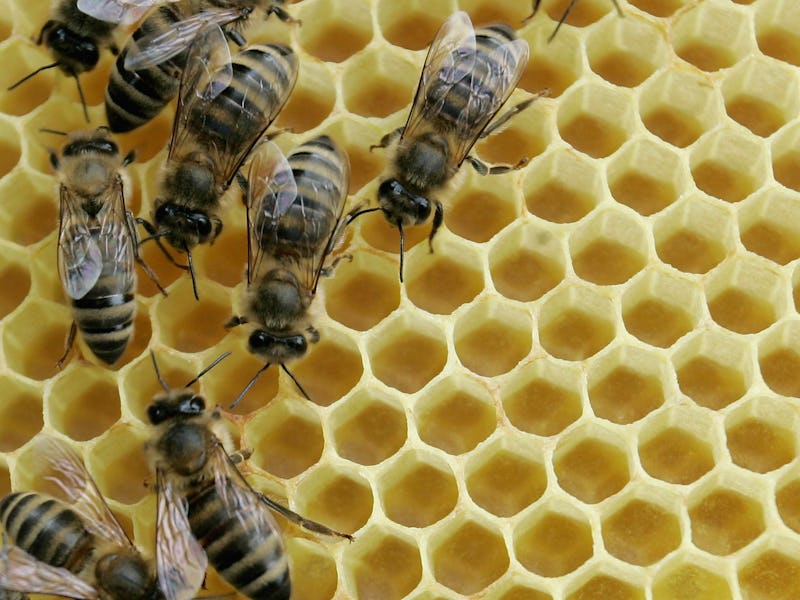How Spraying for Zika Ended Up Killing Millions of Bees
A whole lot went wrong here.

This is the kind of sentence that sounds ridiculous until you hear just what went on, but here goes: This past week was basically the apocalypse for bees in South Carolina’s Dorchester County. A pest control effort targeted at mosquitoes used an insecticide that is highly toxic to bees. The hives of local beekeepers were devastated by last Sunday morning’s aerial spray, leaving millions of bees dead.
Charleston’s Post and Courier reported on the grim scenes:
By Sunday afternoon, thousands of bee carcasses dotted Andrew Macke’s Spring House Lane property. A hobby beekeeper, he’s had two hives for about two years.
>The Summerville fire captain was at work when he spotted the plane flying over.
“My wife called a short time after the flyover and said, ‘We have a mass killing,’” he said. “ We have thousands and thousands of bees dead all around our pool deck and our driveway, just everywhere.’”
One beekeeper, Juanita Stanley of Flowertown Bee Farm and Supply, lost 2.3 million bees. As she told the Post and Courier, “My bee yard looks like it’s been nuked.” The rest of her quote is pretty damn heartbreaking:
“It’s not about the honey. It’s about saving the bees,” she said. “Because of my mission with my business, this is so much more devastating. I am trying to do the opposite of what just happened. They are in a sanctuary where I can protect them, and now they are destroyed.”
So how did this happen? The insecticide in question was naled, which the Environmental Protection Agency notes has been highly effective in wiping out mosquito populations in Florida and Puerto Rico. The EPA also points to the low safety risk that naled poses to humans, crops, the water supply … just about everything other than mosquitoes and honey bees, it would seem. The EPA offers guidelines on how beekeepers can, with adequate warning, protect their hives from harm.
But that’s just the problem, as local beekeepers say Dorchester County officials failed to give them proper notice that a spraying was imminent. While the county does routinely spray naled to control the mosquito population, it normally does so using trucks, which have a relatively limited, predictable range. Sunday’s spray, on the other hand, was done from the air, which gave the unprotected bees nowhere to hide.
It’s worth noting that none of South Carolina’s 46 reported cases of Zika virus were transmitted by local mosquitoes. The state’s Department of Health and Environmental Control says 45 of the cases were from people who contracted the virus while traveling abroad, while one more person contracted Zika after sexual contact with someone who already had the virus.
That’s not to say there’s no danger from local insects — if a South Carolina mosquito does bite someone with Zika, then transmission can start. But the fact there have yet to be any such cases in the state suggest county officials may have moved more swiftly than the situation really warranted, and that rush to spray led to the chain of mistakes — not considering the heightened risks of an aerial spray, not giving beekeepers adequate warning — that left millions of bees dead for no good reason at all. It makes you pine for a better pesticide, honestly.